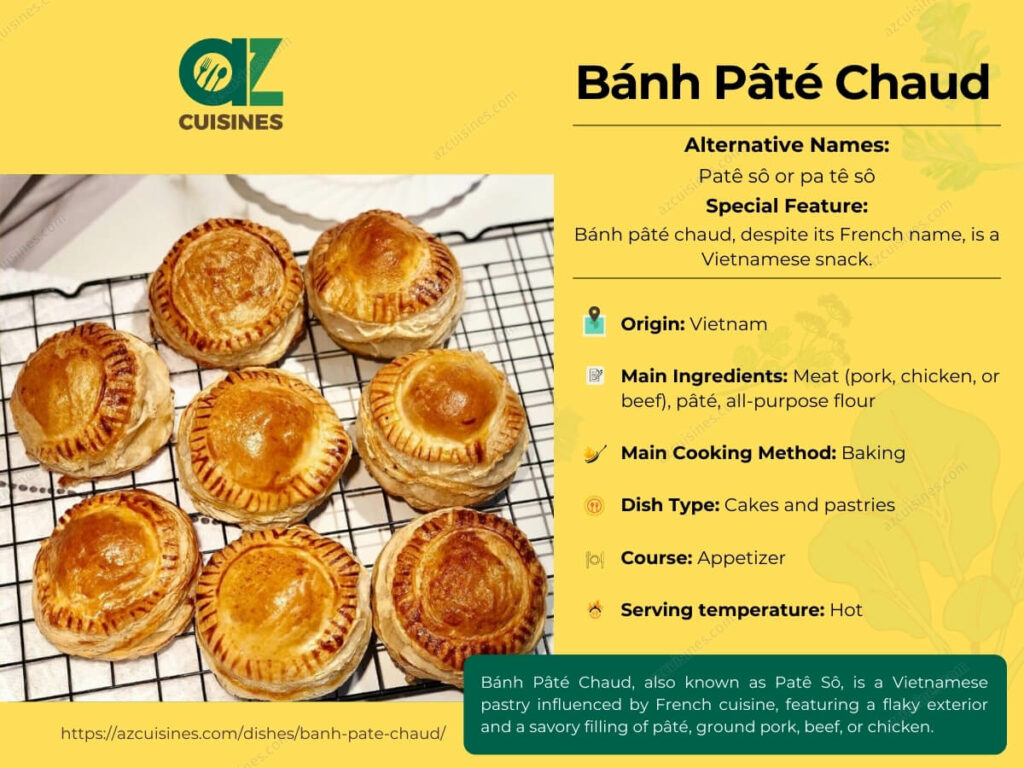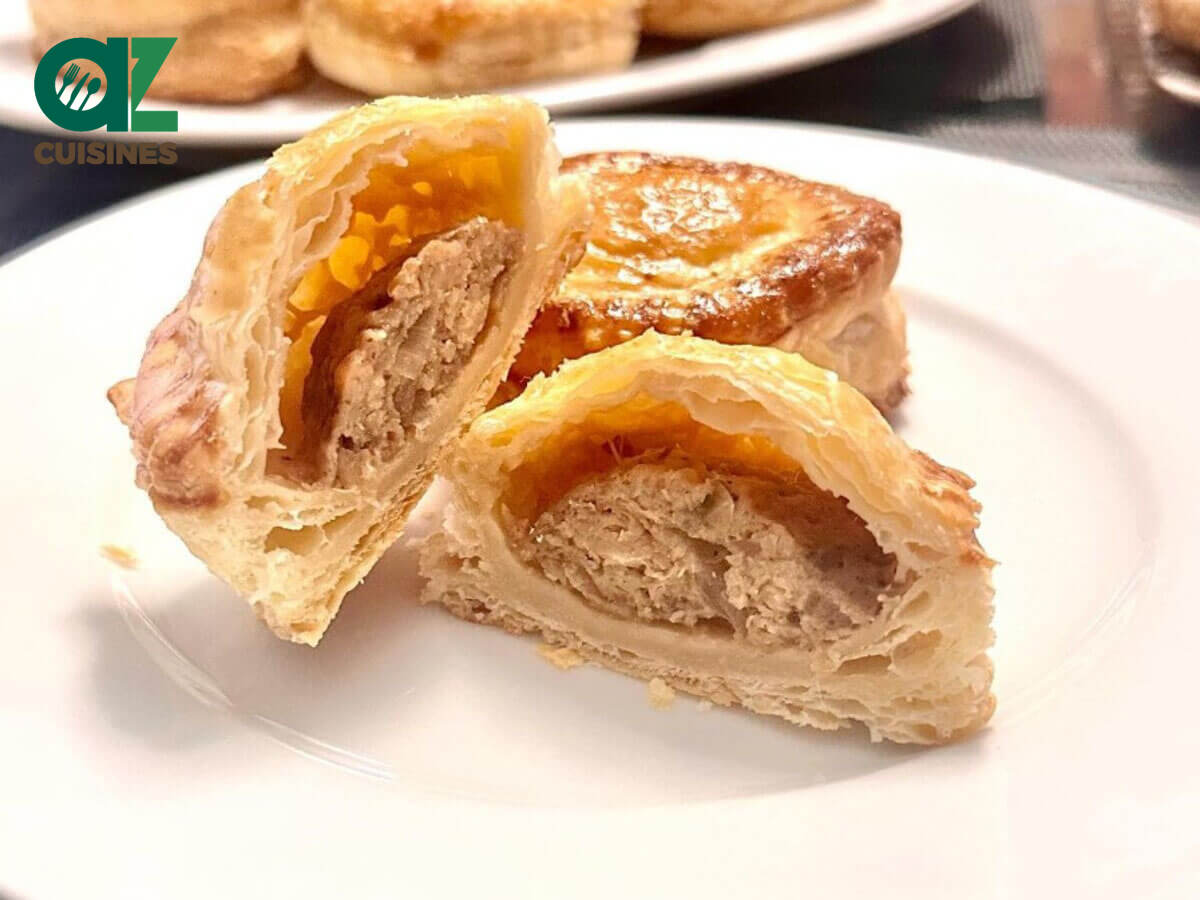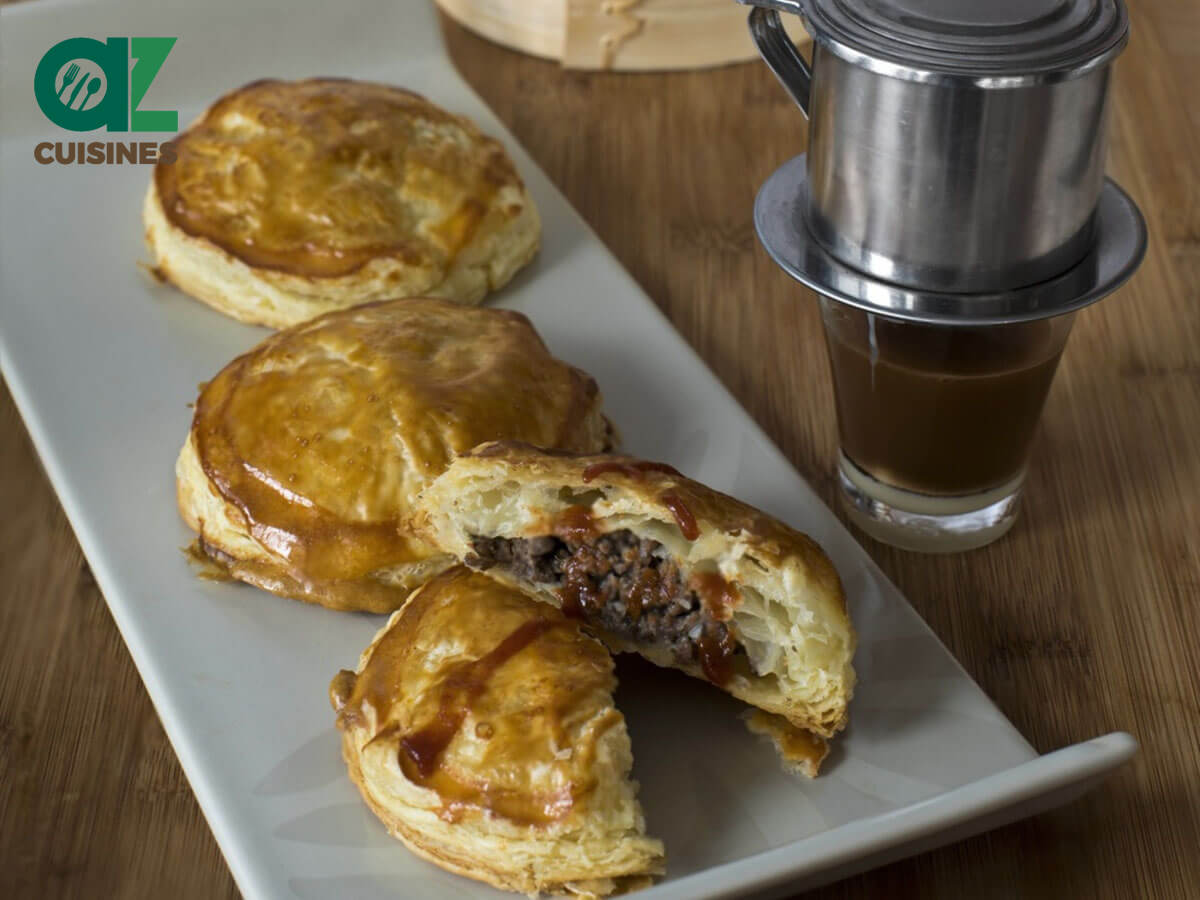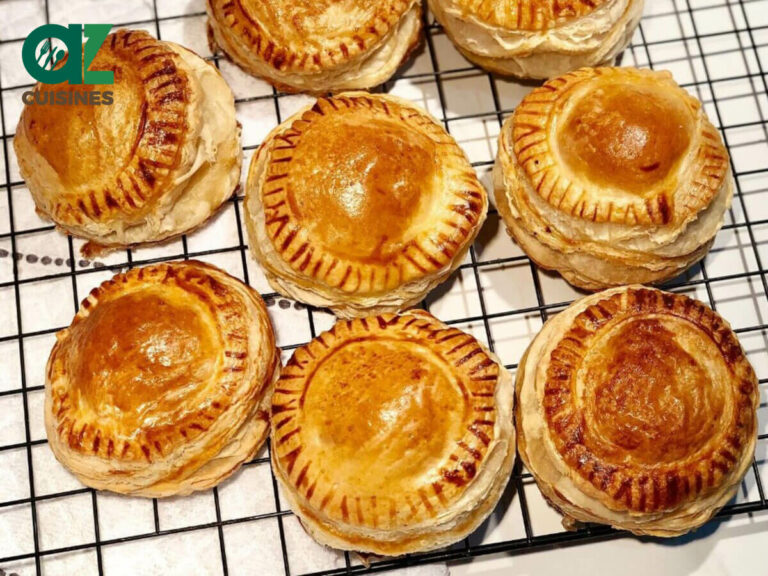#127 in Vietnam
Bánh Pâté Chaud: Basic Information
Pronunciation
Alternative Name(s)
Dish Type
Course
Mealtime
Popular Variations
Bánh Pâté Chaud: Ingredients and Preparation
Main Ingredients
Main Cooking Method
Preparation Process
Bánh Pâté Chaud: A Deep Dive
Cultural Significance
Taste
Texture
Aroma
Color
Serving Style
Serving Temperature
Accompaniment
Occasions
Seasons
Special Diets
Calories
Popularity
Popular Similar Dishes
- Haitian Patties
- Meat Pies
Popular Dining Area
Bánh pâté chaud is a type of pastry that was introduced to Vietnamese cuisine by the French. Also known as patê sô, this street treat offers a flaky exterior while the filling is full of pâté, ground pork, beef, or chicken meat combined with wood ear mushrooms and dried shallots.
Commonly found in Hanoi’s bakeries, pâté chaud comes with a beautiful golden brown layer from the added egg wash layer. In Southern Vietnam, pa tê sô is available mostly in metropolitan areas.
Get to know more about bánh pâté chaud by taking a dive into its history along with the process of creating this pastry. Also, you should consider the benefits and drawbacks of eating this pastry carefully and give some more attention to inquiries relating to the bánh pâté chaud.
Plus, I suggest finding out more about the dishes sharing similarities to bánh pâté chaud.
Key Points
Bánh Pâté Chaud Images
What Is the History of Pâté Chaud?
Pâté Chaud is a Vietnamese adaptation of a French pastry that was introduced by French colonists in the 19th century. Originally made with beef, it later gained popularity in Vietnam when local chefs substituted pork for beef, adding ingredients like mushrooms, shallots, and spices.
In terms of name meaning, pâté chaud is “hot pie” in French, although such terminology has evolved in modern French. Nowadays, French people use the word “tourte” to refer to such a pie as pâté chaud.
Knowing about the history of this Vietnamese pastry is only one half of the story since the process of materializing this treat also provides more essential information.
How to Make Bánh Pâté Chaud?
In Vietnam, bánh pâté chaud is easily materialized once going through these 5 steps of cooking:
Step 1: Prepare the Filling
The chosen meat is mixed with the necessary seasonings and rolled into balls.
Step 2: Prepare the Pastry Dough
If not using pre-made puff pastry, prepare the dough by rolling it out into a thin sheet. The dough should be light and flaky for the right texture.
Step 3: Assemble the Pastries
Cut the pastry dough into circles or squares. Place a spoonful of the cooled meat filling onto each piece of dough. Fold the dough and seal the edges.
Step 4: Egg Wash (optional)
For a golden finish, brush the top of each pastry with an egg wash. This step is optional but adds a nice color and shine to the pastries.
Step 5: Bake the Pastries
Preheat the oven to the required temperature. Place the assembled pastries on a baking sheet lined with parchment paper. Bake in the oven until the pastries are puffed up and golden brown. Let the pastries cool off a little bit before serving.
Afterward, you should look into the positive and negative aspects of consuming this flaky pastry before deciding to include it as part of your diet.
Pros and Cons of Eating Bánh Pâté Chaud
It’s always essential to carefully consider all the good and bad effects of bánh pâté chaud to avoid any unwanted effects on your diet.
Pros
Cons
With the pros and cons of eating this pastry out of the way, you should check out some inquiries that others often have for bánh pâté chaud.









Truc Tran (Kris)
Senior Food Editor
Expertise
Home Cooking, Meal Planning, Recipe Development, Baking and Pastry, Food Editor, Cooking-video Maker, Vietnamese Food Evaluation Expert
Education
Truc Tran (Kris), an experienced food writer and editor, is great at exploring and describing global cuisines, from simple street food to fancy dining. In her writing, she skillfully mixes different flavors, cooking methods, and culinary traditions, showing the unique character of various cultures through their food and drinks. On azcuisines.com, Kris highlights her knowledge, especially in Asian cuisine and worldwide traditional dishes.